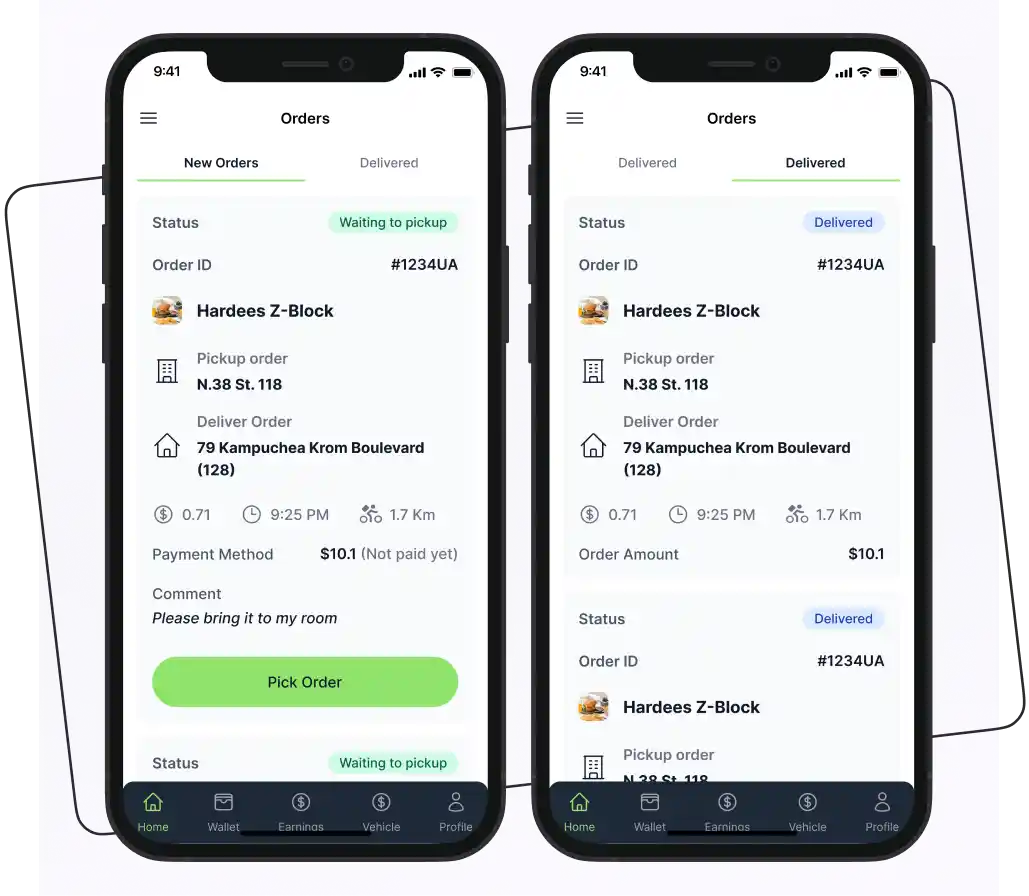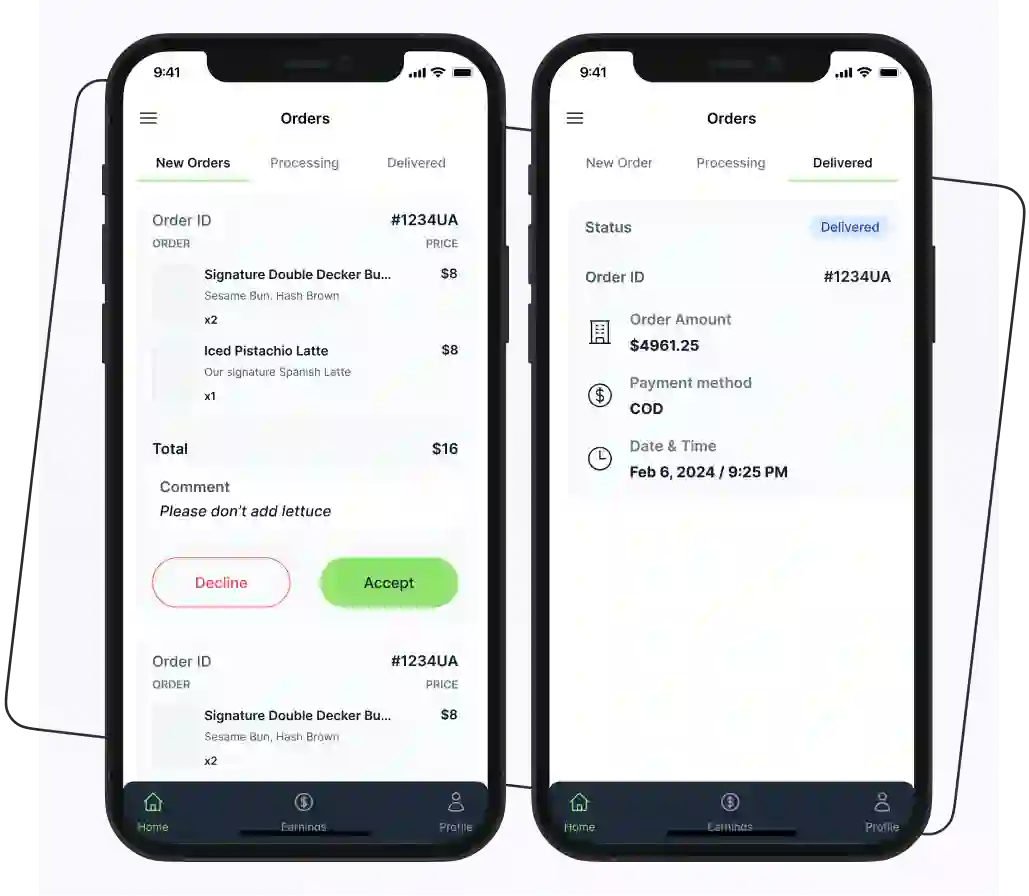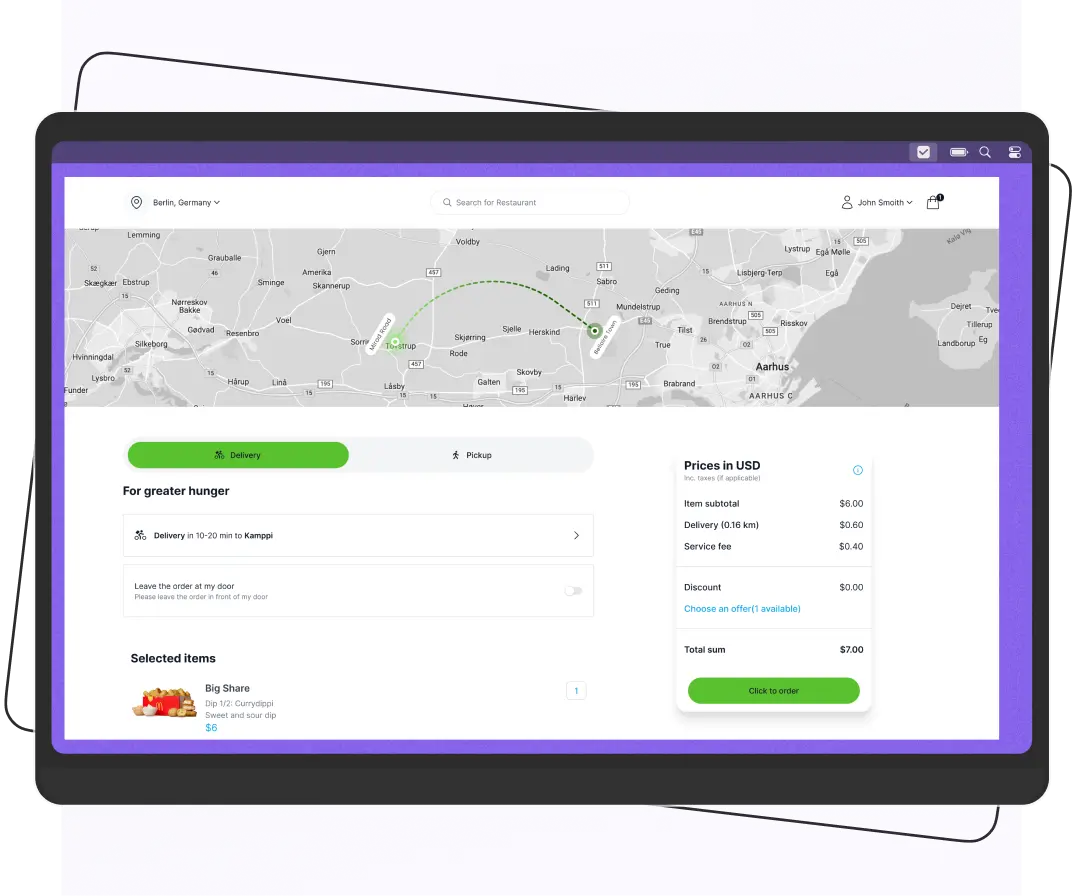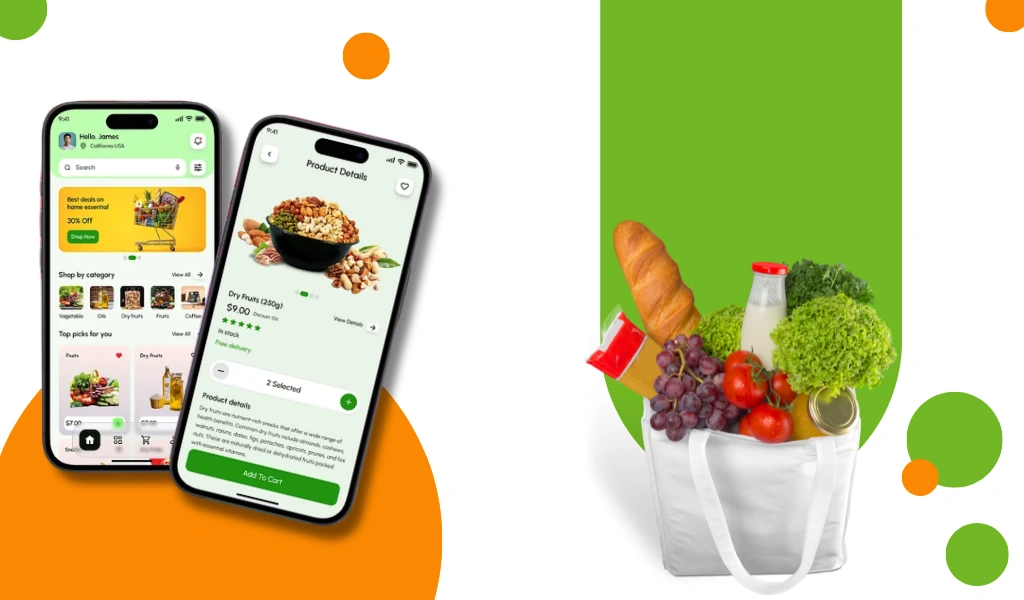
Mobile apps have become an essential part of our daily lives, and we cannot imagine our lives without them. Booking a cab to order groceries is just a few taps away, and we get our daily life tasks done hassle-free.
According to Statista, the grocery delivery market is projected to reach approximately 187.8 million users by 2030.
If you’re thinking about stepping into the growing grocery delivery market, building a powerful, user-friendly app is the first step. But there’s one big question on every business owner’s mind: How much does it cost to build a grocery app?
Spoiler alert, the answer isn’t one-size-fits-all. Depending on features, design, and development approach, the cost can range anywhere from $10,000 to over $150,000.
In this blog, we’ll break down the real cost to develop a grocery delivery app. Therefore, you can make smart decisions and build your app without putting a hole in your pocket.
Supercharge your deliveries with Enatega.
Launch NowCost to Build a Grocery Delivery App
Look at the below and understand the estimated cost to build a grocery delivery app solution.
Grocery App Development Cost by App Type
| App Type | Features Included | Estimated Cost (USD) | Development Time |
| Basic MVP | User registration, product listings, cart, basic checkout | $10,000 – $20,000 | 1 – 2 months |
| Mid-Level App | All MVP features + order tracking, payment gateway, admin panel, push notifications | $20,000 – $50,000 | 3 – 5 months |
| Advanced App | Everything in mid-level + real-time tracking, loyalty programs, analytics, multi-vendor | $50,000 – $100,000 | 5 – 7 months |
| Enterprise-Level App | Custom UI/UX, AI-based recommendations, multilingual support, delivery partner app | $100,000 – $150,000+ | 6 – 9 months |
Development Cost of a Grocery Delivery App by Different Regions
| Region | Average Hourly Rate (USD) | Estimated Cost (Mid-Level App) | Development Quality |
| North America | $100 – $180 | $60,000 – $120,000 | High (Top-tier expertise) |
| Western Europe | $80 – $150 | $50,000 – $100,000 | High (Well-established firms) |
| Eastern Europe | $40 – $70 | $25,000 – $45,000 | Moderate to high |
| South Asia (India, Pakistan, etc.) | $20 – $40 | $15,000 – $30,000 | Moderate (Cost-effective) |
| Southeast Asia | $25 – $50 | $18,000 – $35,000 | Moderate (Affordable + good quality) |
| Middle East | $50 – $100 | $30,000 – $60,000 | Varies (mid to high range) |
| Australia | $80 – $150 | $50,000 – $100,000 | High |
Grocery App Development Cost by Features
| Feature | Description | Estimated Cost (USD) |
| User Registration and Login | Sign up via email, phone, or social media | $1,000 – $2,000 |
| Product Listing and Categorization | Display groceries with filters, categories, and descriptions | $2,000 – $4,000 |
| Search and Smart Filters | Product search, voice search, filtering by price, category, etc. | $1,500 – $3,000 |
| Shopping Cart and Wishlist | Add to cart, save for later, quantity update | $1,500 – $2,500 |
| Secure Checkout and Payments | Multiple payment gateways (Stripe, PayPal, etc.) | $2,000 – $5,000 |
| Real-Time Order Tracking | Track order status, delivery partner location | $2,000 – $4,000 |
| Push Notifications | Order updates, promotions, reminders | $800 – $1,500 |
| User Reviews and Ratings | Rate products and delivery experience | $1,000 – $2,000 |
| Loyalty Programs and Coupons | Referral system, discounts, and promo code integration | $1,500 – $3,000 |
| Admin Panel | Manage orders, users, inventory, pricing, and reports | $4,000 – $7,000 |
| Analytics and Reporting | Insights on user behavior, sales, and inventory | $2,000 – $4,000 |
| Delivery Partner App Integration | Interface for delivery agents (order list, GPS, status updates) | $4,000 – $8,000 |
| Multilingual and Multi-Currency | Localized app interface and currency switching | $2,000 – $5,000 |
| AI-based Product Recommendations | Machine learning suggestions based on user behavior | $3,000 – $6,000 |
How Long Does It Take to Develop a Grocery Delivery App?
Here is the estimated timeline for grocery delivery app development.
| Complexity | App Development Timeline |
| Simple (MVP) | 1-2 months |
| Average/Medium | 4-6 months |
| Complex | 6-10+ months |
Factors That Influence Grocery App Development Cost
Several elements can affect the total cost of developing a grocery delivery app. Understanding these factors will help you plan your budget more accurately.
Let’s discuss them.
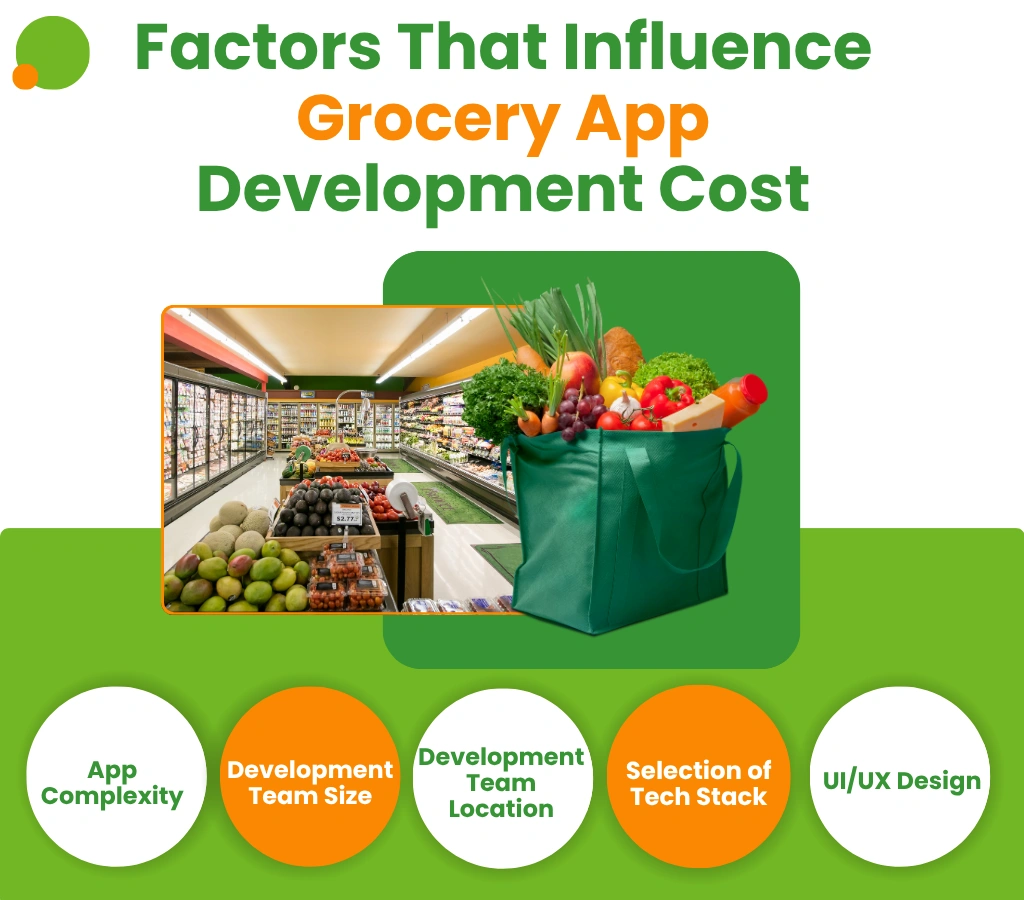
App Complexity
The complexity of your app is one of the most important cost drivers. A basic app with core features like product browsing, cart, and checkout will cost much less than a feature-rich, highly customized platform.
The more complex the app, with features like real-time tracking and multi-vendor support, the higher the development cost. Each added feature increases development hours, design needs, and testing cycles.
Development Team Size
The development team size plays a huge role in how much you’ll pay.
The number and expertise of professionals involved in your project play a major role in the cost. A team includes:
- Project manager
- UI/UX designer
- Frontend and backend developers
- QA/testers
- DevOps and support engineers
Moreover, a larger team increases initial costs, but it also ensures better project execution and faster delivery. It is necessary to hire a team with proven experience in building grocery delivery apps to avoid delays and technical issues later.
Development Team Location
Where your development team is located also impacts your overall budget. For example:
- Teams in North America or Western Europe charge higher hourly rates ($80–$180/hour).
- Developers in Eastern Europe, South Asia, or Southeast Asia offer more affordable options ($20–$70/hour) without necessarily compromising quality.
Selection of Tech Stack
The technology stack you choose plays a role in determining both the functionality and the cost of your grocery delivery solution. The right stack ensures your app is scalable, fast, and secure, but also affects your development timeline and budget.
Development teams select tech stacks based on project requirements, available expertise, and budget. A more enterprise-level tech stack may cost more but delivers long-term performance and maintainability.
Here are some common technologies used for building a grocery delivery app like Instacart.
| Component | Popular Technologies |
| Programming Languages | JavaScript, Java, Kotlin |
| Front-End Frameworks | React Native, Angular, Vue.js |
| Back-End Frameworks | Node.js, Ruby on Rails, PHP |
| Database | MySQL, MongoDB, PostgreSQL |
| Payment Gateways | Stripe, PayPal, Braintree |
| Location Services | Google Maps, Mapbox |
| Push Notifications | Firebase Cloud Messaging, Apple Push Notification Service (APNs) |
Each of these technologies has different licensing, integration, and development costs. Choosing open-source tools can reduce expenses, and premium services may increase reliability but also add to the budget.
UI/UX Design
A poor UI/UX design can drive your users away. Your app’s user interface (UI) and user experience (UX) directly impact both user satisfaction and development costs.
- A basic UI/UX design with standard components and minimal customization is cost-effective and quicker to implement.
- A custom UI/UX with smooth transitions, interactive elements, and personalized animations adds value to your app. However, it also increases design and development time.
How to Reduce Grocery App Development Costs?
Below are some tips to help you reduce the on-demand grocery delivery app development cost.
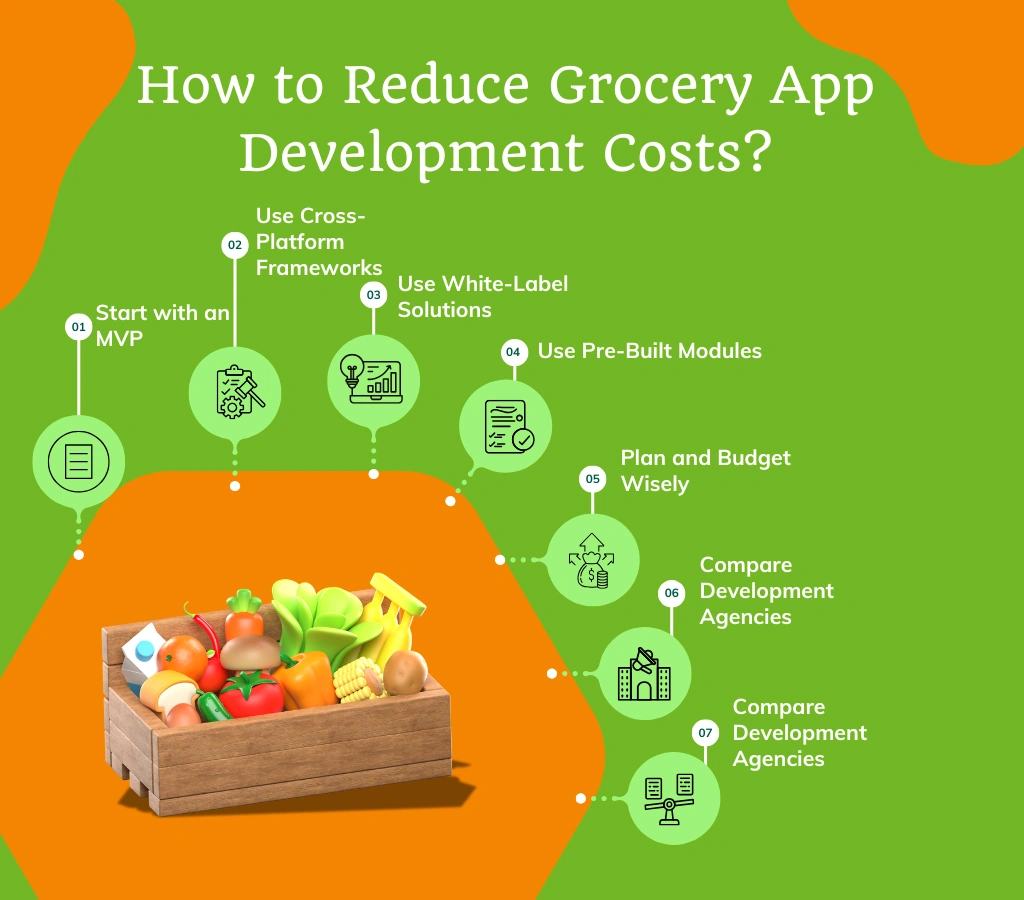
Start with an MVP (Minimum Viable Product)
Not starting with the MVP can be money-draining. Instead of building a feature-heavy app from day one, focus on launching with core functionalities such as:
- User login
- Product search
- Cart and checkout
- Order tracking
An MVP helps you validate your idea quickly and cost-effectively. It also leaves room for future enhancements based on user feedback.
Use Cross-Platform Frameworks
Opt for development frameworks like Flutter or React Native. These allow you to build a single codebase that runs on both iOS and Android. It saves time, effort, and money compared to building two separate native apps.
Use White-Label Solutions
Consider using a white-label grocery delivery platform. These pre-built solutions offer ready-to-use features and infrastructure, allowing faster launch times at a fraction of the cost of custom development. You can still customize the app’s branding and UI to match your business identity.
Use Pre-Built Modules
Many third-party tools and APIs can help you integrate features like payments, maps, notifications, and analytics without building them from scratch. This reduces development time and cost considerably.
Plan and Budget Wisely
Detailed planning is necessary. Define your feature list, user journeys, and development milestones. A well-thought-out plan helps prevent overspending and complete the project on budget.
Compare Development Agencies
Don’t settle for the first quote. Research and compare multiple app development companies, look at their portfolio, pricing models, and client reviews to find the best fit for your goals and budget.
Outsource to Cost-Effective Regions
Hiring a development team from regions like South Asia or Eastern Europe can help you save due to lower hourly rates without necessarily sacrificing quality.
Custom Development vs. White-Label Solution
When building a grocery delivery app, one of the first decisions you’ll need to make is whether to go for custom development or a white-label solution. Each option has its own pros, cons, and cost implications.
Look at the table below and understand the differences between custom development and a white-label solution.
| Aspect | Custom Development | White-Label Solution |
| Development Time | Longer (3–9 months depending on complexity) | Faster (2–4 weeks to launch) |
| Cost | High ($30,000 – $150,000+) | Low to Moderate ($5,000 – $30,000) |
| Customization | Fully customizable features, UI, backend | Limited to branding, colors, and minor UI changes |
| Ownership | Full ownership of code and IP | License-based or subscription model |
| Scalability | Highly scalable and can grow with your business | Limited and may require migration later |
| Maintenance and Support | Responsibility of your team or hired agency | Usually provided by the vendor |
| Best For | Businesses with unique needs and long-term growth plans | Startups and small businesses looking for fast, budget-friendly entry |
FAQs
1. How to create a grocery shopping app?
Below are some steps to help you create a grocery shopping app.
- Start planning
- Decide on your business revenue strategy
- Select the app features
- Choose a development approach
- Select the tech stack
- Start the app development
- Testing and launching
2. How much does it cost to build an app like Instacart?
The cost to build an app like Instacart can range between $35,000 – $50,000 for Android and $40,000 – $55,000 for iOS.
3. How much does it cost to make a food app?
The cost to develop a food delivery app like DoorDash or Grubhub can range from $20,000 to $150,000 or even higher, depending on the complexity and features included.
4. What features should a grocery app have?
Here are some features that a grocery app should include:
- Product browsing
- Secure payment options
- Real-time tracking
- Easy checkout process
Supercharge your deliveries with Enatega.
Launch NowConclusion
One wrong turn in development, and your budget can spiral out of control. But now that you’re equipped with a clear understanding of grocery app development costs, you’re in a strong position to make smart, cost-effective decisions.
Whether you're launching a simple MVP or a full-scale grocery delivery platform, planning is the key to staying on budget and track.
Need expert guidance? Enatega’s team of seasoned developers is here to turn your vision into a high-performing app that improves your business growth.
Book a free demo today and see how we can build the perfect grocery delivery solution tailored to your goals.








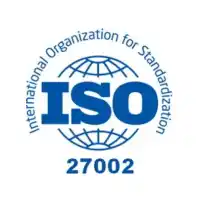
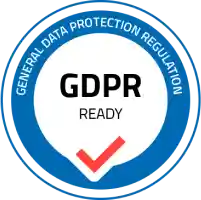
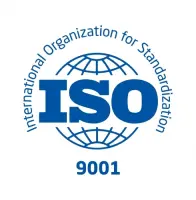

 IOS
IOS Android
Android Web
Web
